The Story of the Malakand Field Force by Winston S. Churchill (guided reading books txt) 📕
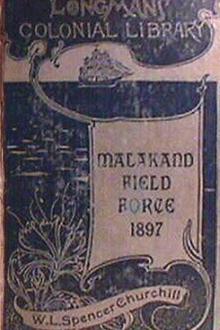
- Author: Winston S. Churchill
- Performer: -
Book online «The Story of the Malakand Field Force by Winston S. Churchill (guided reading books txt) 📕». Author Winston S. Churchill
The narrow, swinging, wire bridge across the Swat is nearly 500 yards long. At the southern end it is closed by a massive iron door, loopholed for musketry, and flanked by two stone towers, in one of which a Maxim gun is mounted. On the further side is the fort itself, which consists of the fortified knoll, a strong stone horn-work, an enclosure for horses, protected by a loopholed wall and much tangled barbed wire, and the signal tower, a detached post 200 yards up the cliff.
The garrison of the place consisted at the time of the outbreak of twenty sowars of the 11th Bengal Lancers and two strong companies of the 45th Sikhs, in all about 200 men, under the command of Lieutenant H.B.
Rattray. [The actual strength was as follows: 11th Bengal Lancers, 20
sabres; 45th Sikhs, 180 rifles; 2 British telegraphists; 1 Hospital Havildar; 1 Provost Naick (24th Punjaub Infantry); 1 Jemadar (Dir Levies). British officers—45th Sikhs, Lieutenants Rattray and Wheatley; Surgeon-Captain V. Hugo; Political Agent, Lieutenant Minchin.] As the rumours of an impending rising grew stronger and stronger, and the end of July approached, this officer practised his men in taking stations in the event of an alarm, and made such preparations as he thought necessary for eventualities. On the 23rd he received an official warning from the D.A.A.G. [Deputy-Assistant-Adjutant-General. Surely this astounding title, with that of the Deputy-Assistant-Quarter-Master-General, might be replaced with advantage by the more sensible and appropriate terms “Brigade Adjutant” and “Brigade Quartermaster”!], Major Herbert, that a tribal rising was “possible but not probable.”
Every precaution was henceforth taken in the fort. On the 26th, a Sepoy, who was out sketching, hurried in with the news that a large body of tribesmen were advancing down the valley, and that he himself had been robbed of his compass, his field-glasses and some money.
But, in spite of the disturbed and threatening situation, the British officers of the Malakand garrison, though they took all military precautions for the defence of their posts, did not abandon their practice of riding freely about the valley, armed only with revolvers.
Nor did they cease from their amusements. On the evening of the 26th, Lieutenant Rattray went over to Khar as usual to play polo. Just as the game was ended, he received a letter, brought in haste by two sowars, from Lieutenant Wheatley, the other subaltern at Chakdara, warning him that a great number of Pathans with flags were advancing on the fort. He at once galloped back at full speed, passing close to one large gathering of tribesmen, who for some reason of their own took no notice of him, and so reached the fort in safety, and just in time. Formidable masses of men were then closing in on it. He telegraphed to the staff officer at the Malakand reporting the impending attack. Immediately afterwards the wire was cut by the enemy and the little garrison got under arms.
A havildar of the Khan of Dir’s Levies had promised the political agent to give warning of any actual assault, by lighting a fire on the opposite hills. At 10.15 a solitary flame shot up. It was the signal.
The alarm was sounded. The garrison went to their posts. For a space there was silence, and then out of the darkness began a fusillade, which did not stop until the 2nd of August. Immediately the figures of the tribesmen, as they advanced to the attack on the western face of the fort, became visible. The defenders opened fire with effect. The enemy pressed on vigorously. Their losses were severe. At length they retreated repulsed.
A second attack was immediately delivered against the northeast corner and again beaten off by the garrison. At 4 A.M. a third assault was made upon the cavalry enclosure. The tribesmen, carrying scaling ladders, advanced with great determination. They were received with a deadly fire. They then drew off, and the first night of the siege was terminated by desultory firing. The garrison remained at their posts all night, and when it became day the enemy were seen to have retired, to the hills to the northwest, whence they maintained a ceaseless fire.
Although the defenders were protected by their stone walls, many had strange escapes from the bullets, which fell incessantly into the interior.
Meanwhile, in spite of the vigorous attack that was being made on the Malakand, it had been decided to send some assistance to the little band at Chakdara. Captain Wright and forty sowars of the 11th Bengal Lancers with Captain Baker of the 2nd Bombay Grenadiers and transport officer at the Malakand, started at dawn on the 27th, by the road from the north camp. Before they had gone very far they came under the fire of the enemy on the hills. These did not dare to venture into the plain, but availed themselves of the broken nature of the country. As the squadron reached the road leading to the polo ground, Captain Wright received information that the enemy were collected on the plain and immediately the pace was quickened in the hopes of a charge being possible. But the tribesmen ran to the hills at the sight of the Lancers, and maintained a constant, though luckily, an ill-aimed fire. At length the village of Batkhela was reached, and beyond it the Amandara Pass came in sight.
This is a gap in a long spur, which runs from the southern side of the valley to the rapid river in the middle. As the river was then in full flood and unfordable, the only road to Chakdara lay over or through the spur. But the pass was held by the enemy.
Captain Wright had by this time realised, what probably no one at the Malakand then knew, that the enemy’s numbers were enormous. The whole way from Malakand to Amandara—every ridge and hill was crowned with their banners. Wherever the ground protected them from the horsemen they gathered thickly. Cemeteries [Cemeteries are frequent and prominent features of Frontier landscapes. Some of them are of great extent: all of remarkable sanctity.], nullahs and villages swarmed with men. Their figures could be seen in all directions. Far beyond the Amandara Pass bands of tribesmen, of varying strengths, could be observed hurrying with their standards to the attack. But these formidable signs, far from deterring the cavalry soldier, only added, by displaying how great was the need of Chakdara, to his determination to force his way through at all costs.
Under a dropping fire from the cemetery on the right of the road, a brief consultation was held. The Amandara defile was occupied on both sides by the enemy. With the loss of perhaps a dozen men the squadron might gallop through. But this meant leaving all who fell, to perish miserably, by torture and mutilation. To attempt to pick up the wounded, would lead to the annihilation of the squadron. Any alternative was preferable, though if there were no other way, the dash would have to be made, and the wounded left. A Sowar now said there was a path round the rock by the bank of the river. Captain Wright determined to take it.
The path was bad. After about half the spur had been passed, it ended abruptly in a steep white rock. It was, in fact, a path leading to a point where the natives were in the habit of floating across the river upon “mussucks” (inflated skins). To go back now was to fail. Without hesitation, the horsemen turned to the right up the hill and among the rocks, trusting to get through somehow. After passing over ground which would be difficult to move across on foot, they saw a gorge to their left which appeared as if it would lead to the open plain, on the other side of the ridge. Down this gorge forty horses huddled together, with no room to pick their way, were scrambling and jumping from rock to rock, apparently as conscious as their riders that their lives depended on their cleverness—when, suddenly, the enemy appeared.
As soon as the tribesmen, who were holding the pass, saw the squadron trot off to their right towards the river, they realised that they intended to make a desperate effort to get through to Chakdara. They knew what the ground was like, and confident they would kill them all, if they could get there soon enough, ran swiftly along the spur. It was a race. The leading tribesmen arrived in time to fire on the cavalry, while they were in the gorge. So close were they, that the officers used their revolvers. But the Pathans were out of breath and shot badly.
Several horses were hit, including Captain Wright’s, but though the large thigh bone was penetrated, the gallant beast held on, and carried his rider to Chakdara safely.
By the extraordinary activity of the horses the rocks were cleared before the enemy could collect in any strength. But, to the dismay of all, the gorge was found to lead, not to the plain, but to a branch of the river. A broad, swift channel of water of unknown depth confronted the cavalry. To go back was now, however, out of the question. They plunged in. The 11th Bengal Lancers are perhaps better mounted than any native cavalry regiment in India. Their strong horses just held their own against the current. Several were nearly swept away. Captain Wright was the last to cross. All this time the enemy were firing and approaching. At length the passage was made and the squadron collected on an island of flooded rice fields, in which the horses sank up to their hocks. Beyond this ran another arm of the river about fifty yards wide, and apparently almost as deep as the first. The bullets of the enemy made “watery flashes” on all sides. After passing this second torrent the squadron found themselves again on the same bank of the river as the enemy. They were in swampy ground. Captain Wright dismounted his men and returned the fire. Then he turned back himself, and riding into the stream again, rescued the hospital assistant, whose pony, smaller than the other horses, was being carried off its legs by the force of the water. After this the march was resumed. The squadron kept in the heavy ground, struggling along painfully. The enemy, running along the edge of the rice fields, maintained a continual fire, kneeling down to take good aim. A sowar threw up his hands and fell, shot through the back. Several more horses were hit. Then another man reeled in his saddle and collapsed on the ground. A halt was made. Dismounted fire was opened upon the enemy. The wounded were picked up, and by slow degrees Chakdara was approached, when the Bridgehead Maxim gun compelled the tribesmen to draw off. [For the particulars of this affair I am indebted to Captain Baker, 2nd Bombay Grenadiers, who shared its perils.]
Thus the garrison of the fort received a needed reinforcement. I have given a somewhat long description of this gallant ride, because it shows that there are few obstacles that can stop brave men and good horses.
Captain Wright now assumed command of Chakdara,

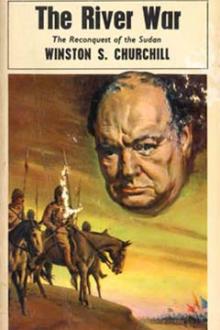
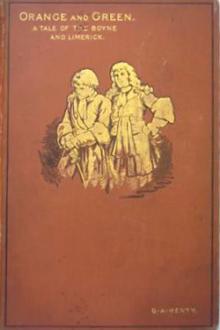
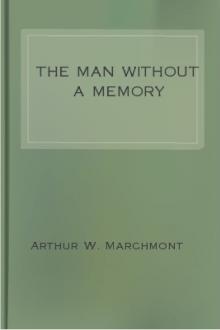
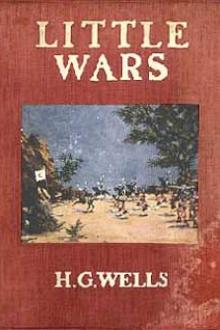
Comments (0)